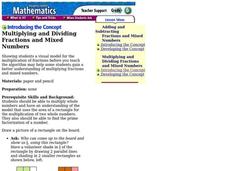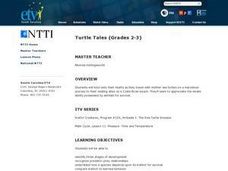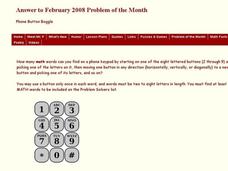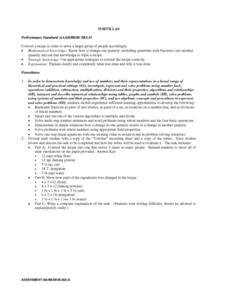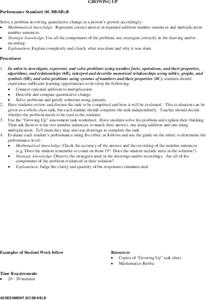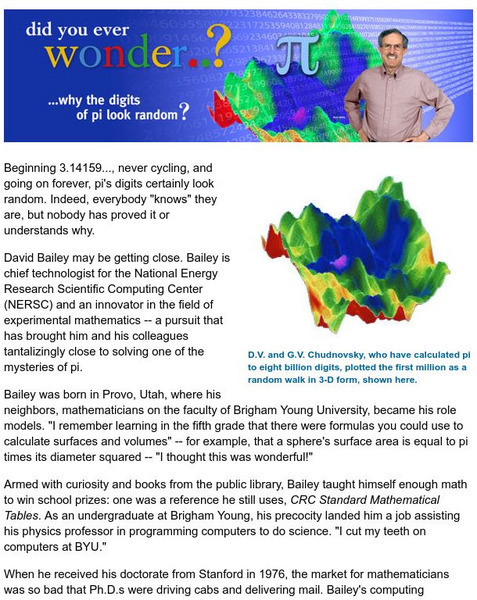Concord Consortium
Square-Ness
Are there some rectangles that are more square than others? A thought-provoking task asks individuals to create a formula that objectifies the square-ness of a set of rectangles. They then use their formulas to rank a set of rectangles.
Curated OER
Perturbing Functions and Introduction to Matlab
In this math worksheet, students practice using the program of Matlab and apply them while using functions. They practice writing equations in truncated form.
Curated OER
Adding and Subtracting Fractions and Mixed Numbers
Elementary schoolers participate with their teacher's instruction to learn to add and subtract fractions and mixed numbers. They use fraction strips to complete addition and subtraction problems. A step-by-step script is provided to help...
Curated OER
Multiplying and Dividing Fractions and Mixed Numbers
Help math learners discover how to multiply fractions and mixed numbers. They will explore visual examples of the operations. They also practice solving problems that their instructor models.
Curated OER
Equivalent Decimals
Young scholars develop strategies to find equivalent decimals. In this equivalent decimals lesson, students participate in a variety of decimal games to find equivalent decimals.
Curated OER
Let's Trade
Second graders engage in a instructional activity which focuses on adding two-digit numbers and the regrouping process. They identify when the regrouping process is necessary and make appropriate "trades" to complete an addition problem.
Curated OER
There's More Than One Way to Get to St. George!
Fourth graders explore alternative ways to do the four operations.
Curated OER
Turtle Tales
Students watch videos and fill out worksheets about the turtles and their journey to the Costa Rican beach. In this turtles lesson plan, students learn and discuss survival, predator and prey, and stages of development.
Curated OER
In the Bag!
Pupils calculate how many quarters are in a $1,000 bag (after learning the dollar value of filled coin bags). They explain their problem-solving strategy using pictures, numbers, equations, and/or words.
Curated OER
Adding and Subtracting Fractions
Second graders use blocks to show the addition and subtraction of fractions with common denominators. They identify the steps in these functions and complete a worksheet.
Curated OER
Phone Button Boggle
In this phone button boggle worksheet, students identify the number of math words they can find on a phone keypad according to given directions. This one-page worksheet contains one problem. Answers are provided.
Curated OER
Junk Yard Math
Third graders explore the process of place value and subtraction through regrouping and borrowing exercises. Several activities using manipulatives are utilized in the activity.
Curated OER
Tortillas
Students convert recipes for tortillas. They calculate the amounts of ingredients as they convert recipes and write an explanation of the task to demonstrate their calculations. After reviewing their calculations, they demonstrate how...
Curated OER
How Many Months?
Students investigate the first Peter the Mint Eagle, who lived at the Philadelphia Mint from 1830 to 1836. They determine how many months Peter was there and use pictures, numbers, equations, and/or words to explain how they came up with...
Curated OER
Growing Up
Students solve a given problem and explain their thinking using two number sentences to match their answer. One number sentence must use addition, one must use multiplication, and students must explain their answers. Includes sample...
Curated OER
Cutting the Wood
Students demonstrate and describe the effect of multiplying or dividing by a fraction less than or greater than one. They create and explain a variety of equivalent ratios that represent a given situation. Students draw a picture of...
Curated OER
Save Your Change
Students solve problems involving exponential, logarithmic, and scientific notations. Using calculators, students explore investment problems. They use a formula and logarithms to determine the years to earn a particular income, figure...
Lawrence Berkeley National Laboratory
Berkeley Lab: Did You Ever Wonder? Why the Digits of Pi Look Random?
Students investigate the randomness of the digits of pi. The article discusses David Bailey, experimental mathematics, and numerical algorithms. The resource consists of pictures, quotes, and links to additional resources.
Texas Instruments
Texas Instruments: Dividing Fractions
In this activity, students make use of a visual representation for dividing fractions. They also discover the numerical algorithm used to divide fractions.
Other
Ibm: Mastering Recursive Programming
A discussion of how to write a correct recursive algorithm. Numerous examples are given in several different programming languages.





